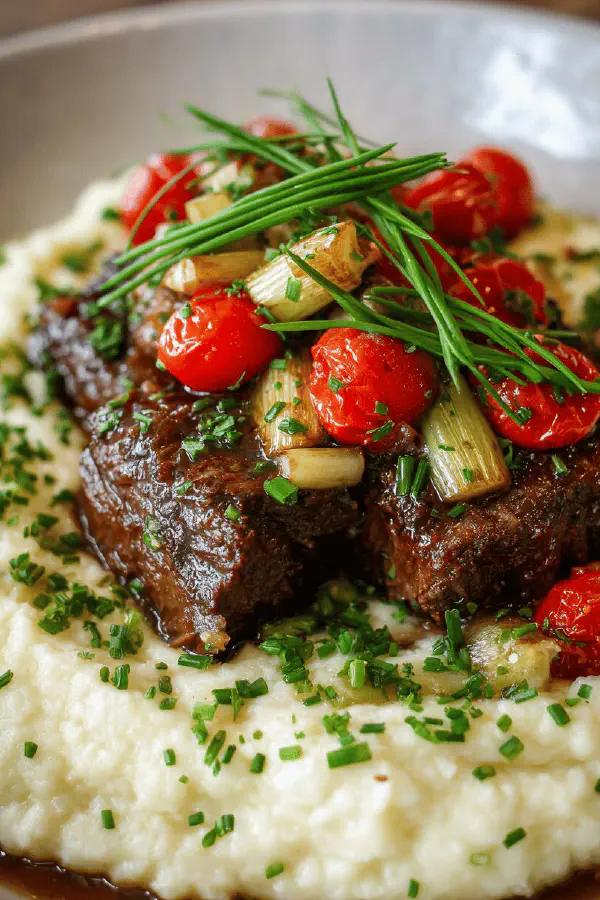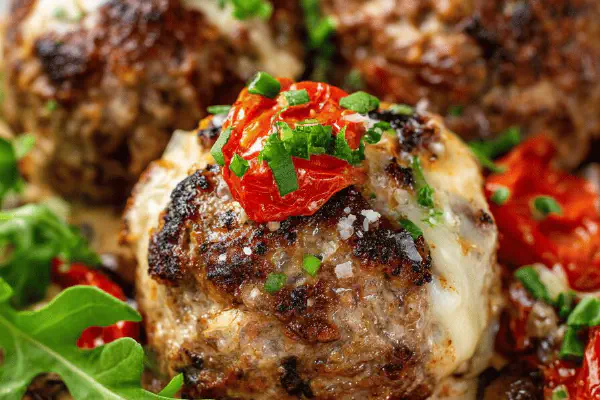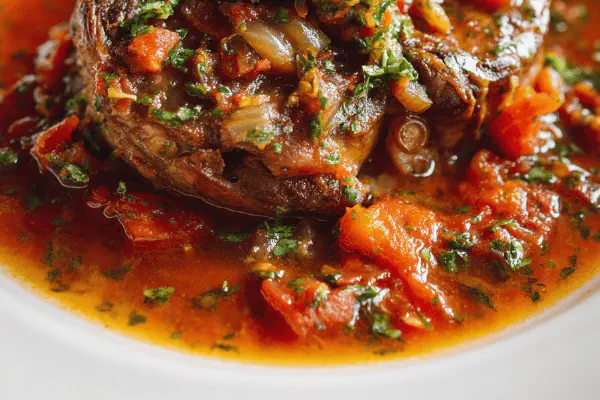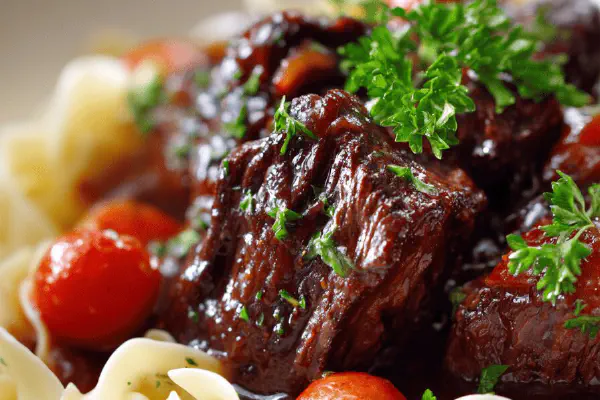Featured Recipe
Boeuf braisé aux deux céleris revisité

By Kate
"
A braised beef shoulder roast infused with a mix of celery root and stalks browned separately for texture contrast. Replacing sparkling cider with dry white wine deepens flavor complexity. Onion swapped for shallots adds subtle sweetness and garlic intensified. Cook covered at moderate oven heat over nearly 2 hours until tender with layered cooking stages. Finish with fresh chives instead of green onion and a handful of tart cherries replaces cranberries, balancing earthy and bright notes. Serves six with rustic mashed potatoes or creamy parsnip puree.
"
Prep:
25 min
Cook:
Total:
Serves:
6 servings
French cuisine
braising
comfort food
Introduction
Braised beef with celery, but done differently. Chuck roast, not lean, carries flavor under long heat. Separating celery root and stalk offers two points of texture—earthy cream and crunch. Swap cider for dry white wine; acidity steadies richness, no sugar bump. Shallots instead of onions cut sharpness, garlic turns aromatic but controlled. Oven cooking covered traps moisture, develops tenderness evenly. Last-minute chives boost freshness, dried tart cherries add acid bite, counterbalance the heavy meat. Visual, tactile doneness beats clocks. Smell soulful aroma of garlic and wine. Poke beef, it yields but holds together. This is slow cooking with precision, no shortcuts. Practical and rewarding.
Ingredients
About the ingredients
Chuck roast preferred for marbling and connective tissue. No wine? Use chicken broth but add a splash of vinegar or lemon juice to mimic acidity. Celery root and stalk combo essential—celery root alone cooks mushy; stalks add bite. Dried tart cherries replaced cranberries here for sharper flavor; substitute with raisins soaked in brandy if unavailable. Shallots offer subtle sweetness and less pungency than onions; reduce if swapping back. Olive oil adequate for searing and sauté, no need for butter which can burn at these temperatures. Season in layers—undersalt and meat tough. Fresh herbs last step avoid losing aroma during long braise.
Method
Technique Tips
Sear meat on high heat to lock flavors, don’t rush. Fond buildup on pan bottom boosts taste when deglazed with wine. Medium heat for shallots prevents bitterness, garlic only added at end lest it burn. Wine added cold to lift pan bits, not boiling hard to avoid bitter reduction. Keep covered during oven braise to maintain moisture, no peeking except last 40 minutes to add veggies. Pan-searing celery root and stalk separately ensures texture contrast—don’t toss raw veg in pot at start or they turn to mush. Timing flexible; check meat resistance with finger or fork, it should feel tender but intact. Adding delicate herbs and dried fruit last retains aroma and sharp acidic brightness. Serve immediately with thick mashed root vegetables to catch juices.
Chef's Notes
- 💡 Use a trusty pot; cast iron works great; retains heat well. Browning beef? High heat essential. Get that crust—deep browning develops flavor.
- 💡 Watch your shallots; they can turn bitter quickly. Add garlic near end of cooking. Helps aroma but control cooking to avoid burning.
- 💡 For celery, keep it crisp. Cook until golden but not mushy. Caramelizing brings out sweetness. Texture contrast is key.
- 💡 Wine choice matters; don’t skimp—flavor depth increases. No white wine? Use broth but add vinegar for acidity. Acid cuts richness.
- 💡 Cherries add tartness; swap with cranberries if necessary but different taste. Use raisins soaked in brandy as a plan B.
Kitchen Wisdom
Best way to tell if meat is done?
Poke beef gently. Tender but not falling apart. Visual cues; color remains bright.
Can I use onion instead of shallots?
Yes, but cut back to avoid overpowering flavor. Shallots bring milder sweetness.
What if my beef is tough?
Make sure to braise long enough. Check internal temperature. Should feel tender, not shredded.
How to store leftovers?
Cool completely. Store in airtight container fridge. Reheat gently to maintain moisture; avoid overcooking.



